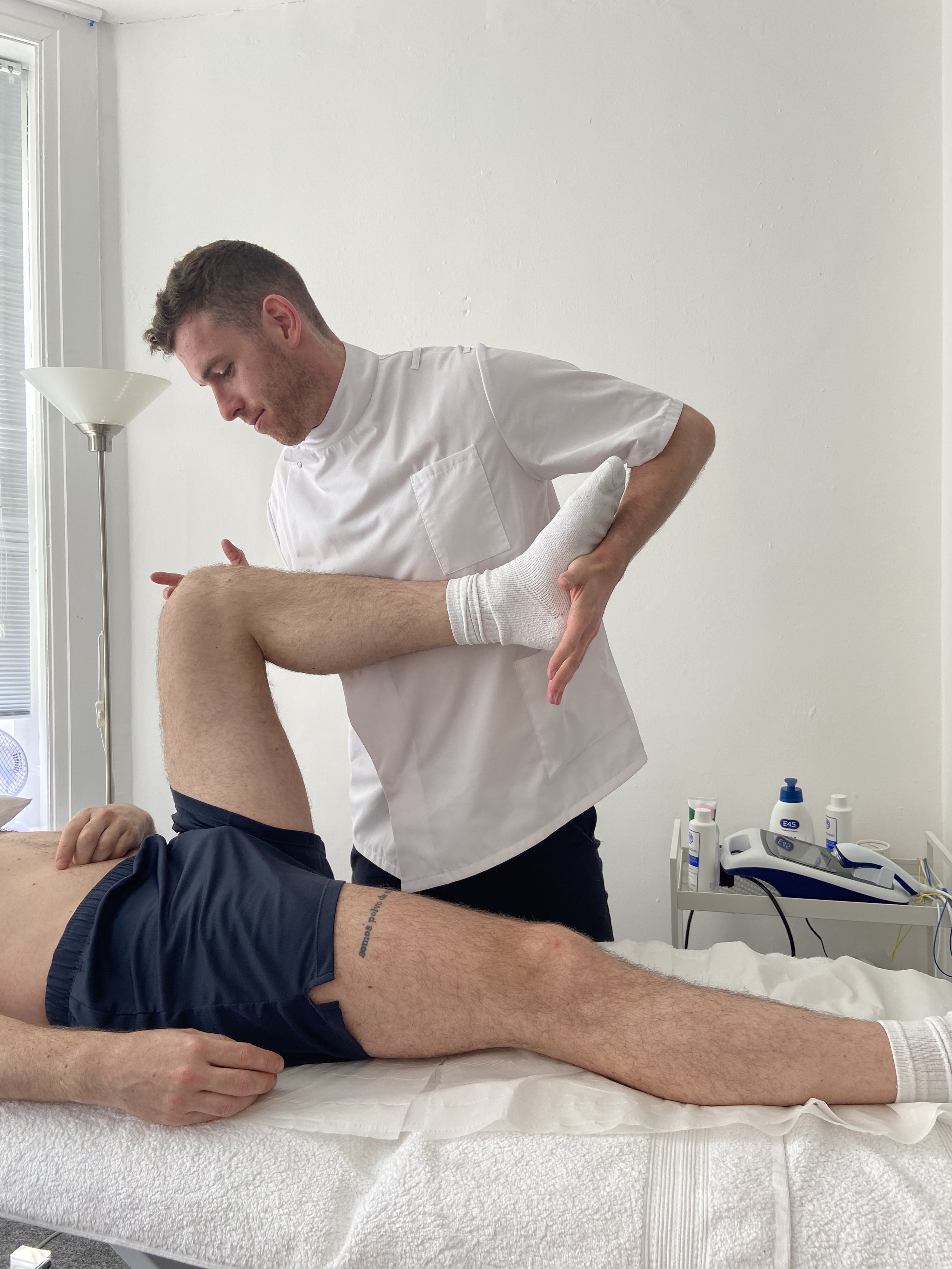Understanding Knee Pain: Causes and Osteopathic Solutions
Knee pain can be a debilitating condition that affects people of all ages and lifestyles. Whether you're an athlete, a fitness enthusiast, or simply someone who enjoys daily walks, knee pain can disrupt your routine and quality of life. In this comprehensive guide, we will explore how Osteopathy can offer effective relief for knee pain. We will delve into the anatomy of the knee, common causes of knee pain, and how Osteopathic treatments can help you regain mobility and comfort.
Part 1: Understanding the function of the knee and how pain manifests
The knee joint is a complex structure that plays a pivotal role in our daily activities. Comprising bones, ligaments, tendons, and cartilage, the knee allows for smooth and coordinated movement.
The knee is a complex hinge joint that plays a vital role in the human body's movement and stability. Its primary functions include:
1. Support and Weight Bearing: The knee bears a significant portion of the body's weight, providing stability while standing, walking, running, and performing various activities.
2. Flexion and Extension: The knee joint allows for the bending (flexion) and straightening (extension) of the leg. These movements are crucial for walking, running, climbing, and many other daily activities.
3. Rotational Stability: The knee provides stability during rotational movements, such as pivoting while changing direction during sports or adjusting the foot's position when standing.
4. Shock Absorption: The knee, with the help of structures like the menisci and articular cartilage, absorbs shock and distributes forces generated during activities, protecting the bones and other joint components.
5. Facilitating Gait: The coordinated movement of the knee joint during walking and running ensures smooth and efficient gait patterns.
6. Supporting Ligaments and Tendons: Ligaments, such as the anterior cruciate ligament (ACL) and posterior cruciate ligament (PCL), provide stability, while tendons, like the patellar tendon, connect the muscles to the bones, enabling movement.
7. Enabling Flexibility: The knee joint's ability to flex and extend allows for various postures and positions, enhancing the body's overall mobility.
In summary, the knee serves as a crucial junction between the upper and lower leg, facilitating movement, stability, and weight-bearing functions essential for daily activities and physical performance. However, when pain strikes, it can hinder even the simplest tasks.
Knee pain can stem from various sources, including:
Osteoarthritis: A degenerative condition where the knee's cartilage gradually wears down, leading to pain and stiffness.
Meniscus Tears: Tears in the meniscus, the cartilage discs that cushion the knee joint, often occur due to sudden twists or impacts.
Tendon and Ligament Injuries: Injuries to crucial knee structures like the anterior cruciate ligament (ACL) or patellar tendon can cause significant pain and instability.
Part 2: Osteopathic Solutions for Specific Knee Conditions
Osteopaths aim to identify and address the root causes of knee pain, not just its symptoms. Treatments often involve hands-on, manual techniques such as Osteopathic manipulation, Chiropractic adjustments, massage, medical acupuncture, and physical therapy/rehab.
Treatment can improve:
Joint Mobility: By gently manipulating the knee joint, osteopaths can enhance its range of motion.
Reduce Muscle Tension: Techniques like massage and myofascial release target muscle tension and promote relaxation.
Enhance Healing: Osteopaths can promote the body's natural healing processes, by increasing blood flow, nerve conduction and joint health.
Pain Reduction: Alleviating pain through manual therapy techniques, and acupuncture.
Joint Health: Enhancing joint mobility and function to maintain overall knee health.
Stability: Restoring knee stability through manual techniques and rehabilitative exercises.
What can Osteopathy do for these conditions:
Osteoarthritis - Osteoarthritis of the knee usually starts around the age of 50, and causes pain and stiffness, which may be worse after a particular movement, such as going up or down stairs. It’s twice as common in women as in men and being overweight increases the chance of osteoarthritis becoming progressively worse. Previous injuries to the knee such as a torn meniscus or ligament can also lead to osteoarthritis in later life.
While osteoarthritis has no cure, osteopathic treatment can help manage its symptoms effectively (see Altınbilek, 2018).
Meniscus Tears - The menisci are two crescent-shaped pads of thick, rubbery shock-absorbing cartilage in your knee joint. They lie between your thigh bone (femur) and your shin bone (tibia). Meniscus tears often happen during a sudden twist when you play sports, but you can also get them as a result of wear and tear as you get older. When people talk about ‘torn cartilage’ in their knee they usually mean a meniscus injury.
Osteopathic manipulation and rehabilitation can be particularly beneficial in cases where surgery is not immediately required (see Feehan 2017).
c. Tendon and Ligament Injuries – Tendons connect muscle to bones and help our limbs move, and ligaments connect bone to bone and give stability to joints, so they need to be stiff and taut. However, injury can occur through overuse, or from trauma where they can be overstretched and torn. The severity of the injury determines what treatments will be affective, such as a complete tear would warrant surgery in most cases. Whereas partial tears, or chronic injuries can benefit from manual treatment combined with a rehab protocol (see Rutland, 2010 for Patella Tendinopathies)
Don't let knee pain dictate your life. Osteopathy offers a holistic and effective approach to knee pain relief. Whether you're dealing with osteoarthritis, a meniscus tear, or tendon and ligament injuries, consulting with an experienced osteopath can help you regain mobility and improve your quality of life. Take the first step towards a pain-free future with Holland Osteopathy.
